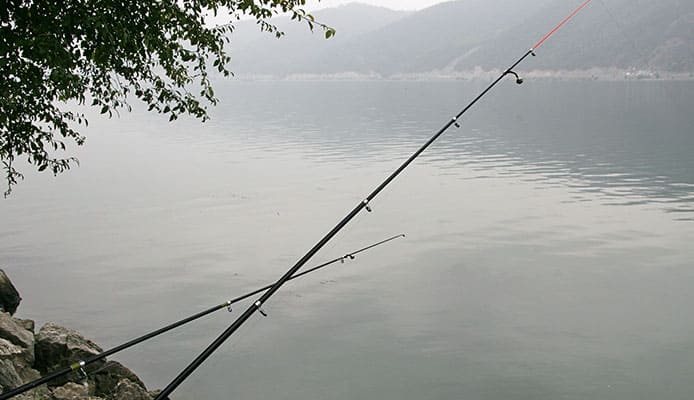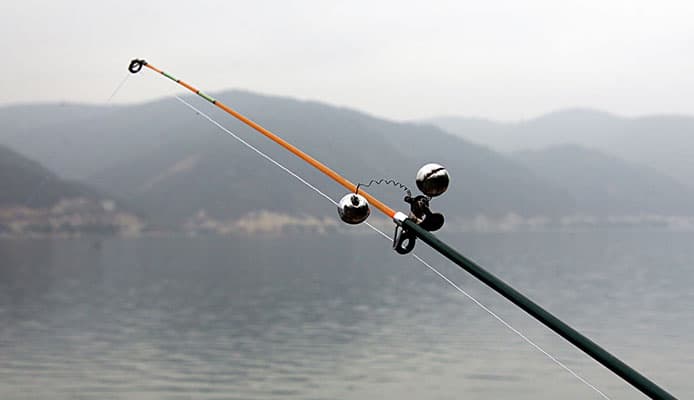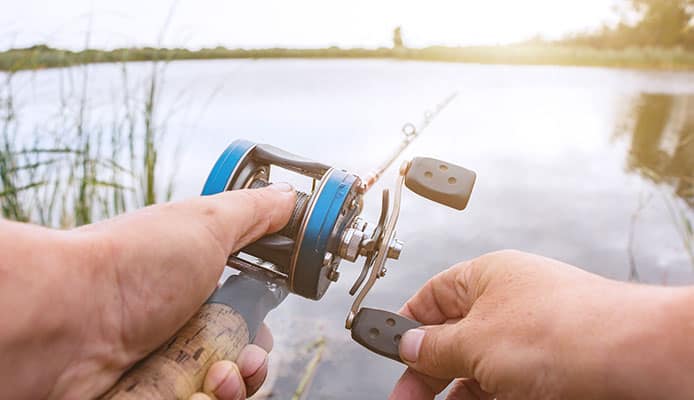
-
1.
-
2.
-
3.
-
4.
-
5.
Catching big fish successfully requires that you have a great casting rod in your hand. If you want to go after trophy fish and experience the excitement the challenge brings, equipping yourself with one of the best baitcasting rods will give you the confidence to go after them, set you up for success and make fishing an absolute pleasure. Baitcaster fishing poles may have a steeper learning curve than spinning rods but once mastered, they offer the best fishing experience. It’s no wonder that experienced anglers prefer them.
Whether you’re adept at using casting rods or looking for your first baitcaster ever, you need a well-constructed rod that feels good in your hand and offers the right combination of power, action, length and other features for your fishing style. It will enable you to accurately cast heavier lures and have the backbone to pull larger, heavier fish from deep water and heavy cover.
We’ve created this page to make it easy to find the best baitcasting rod for the job. We’ve reviewed the top ten best casting rods and then explained what you need to look for when choosing a baitcaster pole. First of all, here are the top rated casting rods that deliver exceptional performance, reliability and value. As you will see, you don’t have to spend a fortune to get a great casting rod.
Ready to get started? Let’s go.
Best All-Round Baitcasting Rod
Shakespeare UglyStik GX2

- Stand Out Features - Why We Love It
- Extremely strong and durable - virtually unbreakable
- Lightweight and well-balanced for comfortable handling
- Sleek, modern aesthetic
- Extra comfortable handle grip
- Fantastic price to value ratio
- Single-piece guides have no pop-out issues
- Backed by a 7-year manufacturer warranty
Best Heavy Fishing Baitcasting Rod
KastKing Perigee II Fishing
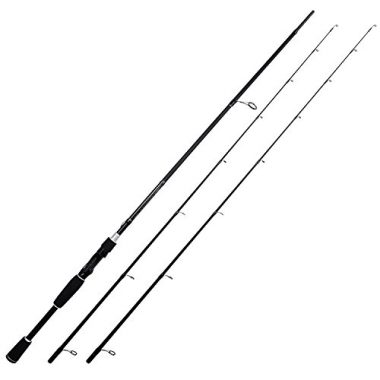
- Stand Out Features - Why We Love It
- Top quality components such as Fuji O-ring line guides
- Twin-tip styles offer two tips for the price of one
- A hook holder adds to its convenience
- High-quality and durable construction
- Smooth power, great action, and accurate casting
- Lightweight and very comfortable to use
- 2-piece rods are travel-convenient with one-piece performance
- Attractive with a sleek finish
- Great packaging when shipping
Best Bass Fishing Baitcasting Rod
Berkley Cherrywood HD
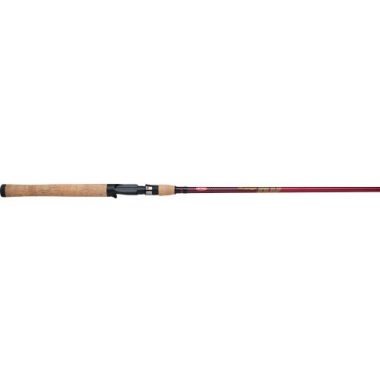
- Stand Out Features - Why We Love It
- Attractive and comfortable cork handle
- Great pricing and incredible value
- Tough and durable construction
- Great feel and action
- Versatile medium powers
- Lightweight and comfortable to use
Best Comfortable Baitcasting Rod
Entsport Camo Legend 2-Piece 7-Feet
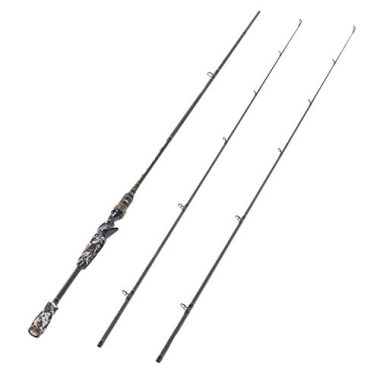
- Stand Out Features - Why We Love It
- Versatile as it comes with two tips offering different powers
- Very stylish and elegant rod
- Strong and lightweight construction
- Corrosion resistant construction
- 2-piece travel design
- Comes with a protective bag with separate compartments for each part
- Ergonomically designed for comfortable handling
- Has a notched reel lock
- Backed by great customer support and a one year warranty
Best Budget-Friendly Baitcasting Rod
Piscifun Torrent Baitcasting Rod Portable Two piece
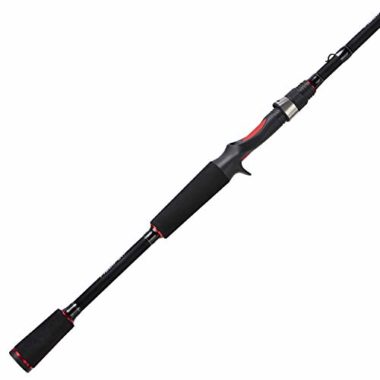
- Stand Out Features - Why We Love It
- Lightweight, ergonomic and comfortable to use
- Its combination of power and sensitivity
- Extremely strong and durable
- Versatile with medium powers and length
Best Beginner Baitcasting Rod
Abu Garcia Vengeance
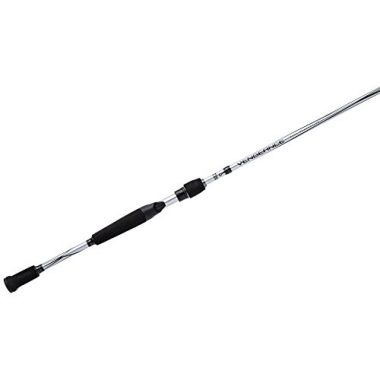
- Stand Out Features - Why We Love It
- Strong and durable build
- Versatile and adaptable casting rod
- Lightweight, balanced and comfortable to cast and retrieve with
- Great quality and performance at a low price
- Has a versatile hook holder
Best Catfish Baitcasting Rod
Rippin Lips Super Cat

- Stand Out Features - Why We Love It
- Optimized for catfish angling
- Strong, durable and corrosion resistant construction
- High-visibility glow tips for night fishing
- Lightweight and comfortable to handle
- Versatile medium heavy power
- High quality components
- Great look and feel
Best Versatile Baitcasting Rod
Shimano FXC 2 Piece
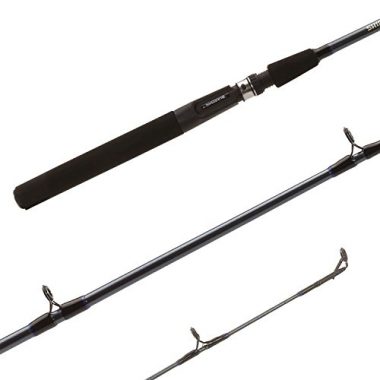
- Stand Out Features - Why We Love It
- Versatile casting rod for all skill levels and fishing situations
- Very sturdy and durable and can withstand a lot of abuse
- Amazing value - offers a lot for the affordable price
- One good looking pole
Best Salmon Fishing Baitcasting Rod
Okuma Celilo Graphite Salmon/Steelhead
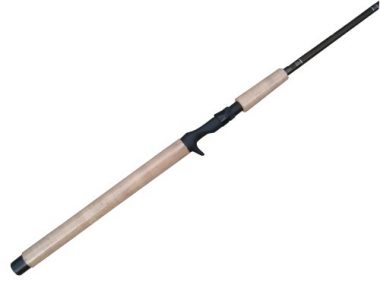
- Stand Out Features - Why We Love It
- High-quality construction
- Incredible sensitivity without compromising durability
- Optimized for salmon and steelhead fishing
- Corrosion resistant stainless steel components
- Great performance for the price
- Great look and feel
- Backed by a 1-year manufacturer's warranty
Best Tournament Baitcasting Rod
Daiwa Tatula
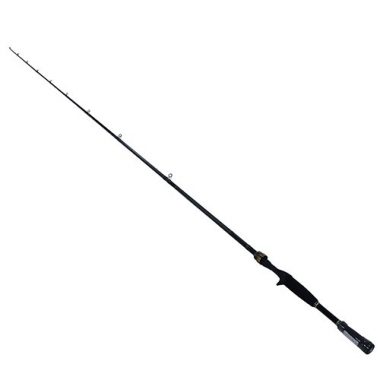
- Stand Out Features - Why We Love It
- Superior action and performance
- Top quality construction and components
- Stylishly and innovatively designed
- Extremely lightweight and comfortable to use it all day
- Versatile with a variety of sizes
- Powerful rods with incredible sensitivity
- Backed by a 5-year manufacturer's warranty
How To Choose The Best Baitcasting Rod – Buying Guide
Have you looked at some of the best casting rods, gotten overwhelmed with all the options and found it hard to pick one for yourself? This buying guide will simply the choosing process.
Your fishing rod is something you are going to be spending a lot of time with and it will determine what kind of fishing experiences you will have. You want to make sure you get the right one. So what makes a good baitcasting rod and how to do you choose the right one for your fishing needs?
It takes more than ordering the first shiny rod you encounter but it isn’t rocket science. It starts with knowing what you’ll be fishing for and how. Knowing where you’ll be fishing, the type of fish you’ll be going after, and the type of lures you’ll be using will make it easy to narrow down your options.
When assessing the best baitcasting rods, pay attention to the following features on any casting rod you’re considering to determine if it offers what you need in a casting rod and get the best baitcaster rod that will deliver optimal performance on the water and give you excellent value for your money.
Line guides
The line guides are the circular rings positioned along the length of the road facing towards the sky on a baitcaster pole. Their purpose is to control the flow of fishing line as you cast and retrieve and minimize the amount of friction and heat on the line to ensure smooth line flow without tangles and enhance the durability of your fishing line.
These eyelets may seem insignificant but they’re very important as they affect the rod’s quality, durability, sensitivity and how smooth and far out casting is. It is, therefore, important to examine the kind of line guides a casting rod you’re considering has. Pay attention to their quality and positioning.
A quality, well-made casting rod will have carefully placed guides that line up and remain straight without twisting or snapping when under pressure. The more guides the rod has, the better its casting performance but the more expensive the rod. Fuji’s Concept guides are considered some of the best.
Most guides feature a metal frame with inserts that the fishing line glides on when flowing. The inserts can be made of plastic, metal or ceramics. Silicon carbide (SiC), is considered the best material and offers a super-smooth, low-friction surface. Nickel-titanium is top quality, extremely corrosion resistant and when bent will spring back into position instead of breaking. Alconite is another smooth material. Ceramic guides are good quality and extremely resistant to wear and friction. Plastic inserts are inferior in quality, durability, and performance.
Reel Seats
The reel seat is where the baitcasting reel you choose to match with your baitcaster rod will sit and attach to the rod. On a baitcaster rod, the reel sits on the top of the rod and so casting rods are top seated.
Pay attention to the quality of the reel seats on any casting rod you’re considering. There’s a lot of pressure on this feature when throwing the heavy line, bait, and lures and fighting heavy fish. You want to ensure the seat is built well to resist the elements, hold the reel securely so it doesn’t fall in the midst of a tough fish fight and enhance the rod’s performance.
Check that the reel seat is designed in such a way that the reel will fit snugly when tightened. Additional screw-down options provide extra security. Beware of poor quality reel seats made out of plastic or faux metal that will bend, break, or snap and cause your reel to fall off.
For added sensitivity, some reel seats have a cutout on the bottom that exposes the rod’s blank so you can feel the blank with your finger when holding the rod. Cushioning inside the metal hoods is good as it prevents rust and stains and makes it easy to remove the reel. Choose a design you find most comfortable to hold.
Power
The power of a casting rod refers to its strength or lifting power. There are ultra-light, light, medium light, medium, medium-heavy and heavy power fishing rods.
Ultra-light and light powers are meant for lighter fishing lines, lures and fighting small fish. Medium heavy, heavy and extra heavy powers give the rod enough backbone to throw heavier lines, lures and bring in large, heavy fish.
Since a casting rod is designed to throw heavier lures and baits to catch bigger fish, you will need a baitcaster pole with medium to heavy powers so it has enough strength to cast heavy lines, lures, baits and lift heavy fish out of heavy cover or deep waters without breaking.
Action
The action of a baitcasting rod describes where it bends when a load is placed at its tip and how quickly it recovers when the load is removed. It determines how a baitcaster rod will perform when casting and fighting fish. There are extra fast, fast, medium, and slow action fishing rods.
Extra fast action rods are extremely stiff and only bend at the tip. Fast action rods are a little more flexible and bend in the top third of the rod from the tip. They pack a lot of power at the tip which enables them to achieve superior casting distance. They’re also very sensitive and set hooks fast and hard.
Moderate action rods are equally stiff and flexible and will bend in the top half of the rod. They are versatile and suitable for casting middleweight baits. They are the easiest for beginners to master.
Slow action rods are the most flexible and bend uniformly throughout the rod’s length. They are good for gentle casts and fishing with delicate and live baits. They set hooks slower and allow fish to get the hook further into their mouth.
Material
The material the casting rod’s blank is made of will affect its ease of use, durability, strength, and performance when fishing.
When using a baitcaster rod to cast heavy lures and land trophy fish, the most important thing you need is strength and durability and fiberglass offers you this. It is strong but heavy and doesn’t have as much sensitivity as graphite. It performs best in heavier applications that don’t require much sensitivity.
Graphite rods are unbeatable when it comes to sensitivity and lightweight comfort. Graphite is also strong but has a tendency to be brittle. It is great for casting, fishing for long durations, and for situations that require a superior feel.
Composite construction combines both graphite and fiberglass to produce lightweight and sensitive yet sturdy and durable rods.
You might also like: Perfect Spinning Rods
Handle/Grip
On a good fishing day, you will have your hand on your casting rod’s handle for hours. It should feel good in your hands and provide a strong grip even when your hands are wet and slippery and no matter how cold or hot it gets. It should also be ergonomically designed to ensure you don’t go home with achy wrists. This is why the handle on a rod and the kind of grip it offers are very important considerations when choosing a casting rod.
Cork and EVA foam are the top handle materials. Both are very lightweight, easy and comfortable to grip. Eva, Hyperlon or Duralon made handles offer a solid, non-slip grip and are also resistant to stains, corrosion and temperature changes. They are the most durable and more affordable than cork handles.
Cork handles offer sufficient grip even when it’s wet and add to the sensitivity and aesthetic appeal of a rod. However, they’re expensive and not all cork handles are made equal. The quality of cork varies with the most expensive rods featuring the best cork grade.
When it comes to length, longer handles help with heavy baits and long casts because the angler you can use two hands to generate more load and forward force. For two-handed casting, an extended rear grip length offers more control and leverage. For short casts of lighter baits, short handles allow for one-handed or roll casting.
Handles on a casting rod also come in full grip, split grip, and pistol grip designs. Full grip handles are best for casting heavy baits or for long distances using two hands. For lighter baits or close target casting, a split grip or pistol grip casting rod is good. A pistol grip is the shortest type of grip a casting rod can have and is usually contoured to conform to the angler’s hand. Blank-through-handle construction enhances the rod’s stability.
Frame Quality
When it comes to frame quality, high-grade aluminum or graphite is good. Graphite frames are lightweight and withstand shock well. Aluminum frames are stronger, heavier and more resistant to flexing than graphite frames. Graphite suits light fishing tasks such as catching small fish while aluminum is ideal for heavier fishing tasks such as bringing in large game fish or saltwater fishing.
FAQs
Q: What Is A Baitcasting Rod?
A baitcasting rod is a fishing rod designed with a top seated reel seat where a baitcaster reel is attached. Below this reel seat is a trigger grip that improves the angler’s control when casting and fighting fish. This kind of rod is designed for heavy fishing applications with heavier lures and bait and for fighting large fish.
Q: When Do I Use A Baitcasting Rod?
Experienced anglers usually favor baitcasting rods. Beginners tend to avoid them because they require proficiency to be able to use them without experiencing the much-dreaded backlash. For those proficient in their use, there are many fishing situations where a baitcasting rod delivers a superior performance and is the go-to type of fishing rod. These include:
When fishing in a challenging environment and you need focus and precision, a baitcasting rod offers you the control you need to cast lures with pinpoint accuracy and make precision presentations.
When you need superior casting distance, a casting rod is able to throw lures farther away. This is because the fishing line comes off the spool directly, straight out the rod guides and launches farther away.
Baitcaster rods are the go-to for power fishing techniques that require you to throw heavier lines and lures and bring in larger and heavy fish from deep waters and thick cover. They have a strong construction with more power and easily cast 10-20lb test lines and 1/4 to 1oz lures and above.
Q: What Is The Difference Between A Regular And Baitcasting Rod?
The two most commonly used fishing rods are baitcasting and spinning rods. Here’s how the two differ:
Reel and Guides
The most obvious difference is the reel seat and guides positioning. A baitcasting rod is designed to work with a baitcasting reel, which is mounted on top of the rod above the handle. The line guides are also positioned on the top of the rod.
A spinning rod is a fishing rod made for a spinning reel, which hangs down underneath the rod held in place with a sliding or locking reel seat. The line guides are also arranged along the underside of the rod.
A baitcasting rod features a forefinger grip trigger underneath the reel seat that enables an angler to maintain control while casting and fighting a fish. A spinning rod does not have this trigger.
Fishing Line Flow
On a baitcasting rod, the line rolls off the spool smoothly and directly and without pulling on the guides. Due to this, the line guides are small with the last eye closest to the reel slightly smaller.
On a spinning rod, the line comes up and off the lip of the spool, pulling on the guides and creating friction and twists that limit casting effectiveness. A spinning rod has large guides to accommodate the large loops of line coming out of the reel. The eyes decrease in size from the handle to the tip. The eye nearest the handle is much larger to reduce friction as the coiled line comes off the reel.
Mastery
A baitcasting rod requires more practice, patience, and skill to master and it can take a while to get the hang of it. A seasoned angler is better equipped with the skill set to handle a baitcaster rod successfully. Beginners encounter a lot of backlashes and have to change the fishing line often. Spinning rods are simple to use and master, present no backlash issues and can be used by anglers of all skill levels.
Performance
A baitcaster rod offers more superior casting accuracy and distance of heavy lines and lures. A baitcaster fishing outfit enables anglers to cast more accurately by controlling the spool with their thumb. A proficient angler using a baitcaster rod can land a lure precisely beside a log or right in the middle of a thick cover. The direct flow of line offers excellent line control and makes it possible to cast lures far away.
Designed for heavy fishing applications, a baitcasting rod is constructed to be powerful and handle heavier line and lures and can pull strong fish from heavy cover. The way the line comes off straight makes it easier to use heavier lines from a 10-20lb test. Designed for finesse fishing techniques using lighter lines, lures, and baits, a spinning rod is less powerful.
A spinning rod also casts lighter lines and lures accurately and farther away but its casting effectiveness is limited by line friction and its less powerful construction.
Globo Surf Overview
Having a good quality baitcasting rod that’s well-constructed and balanced gives you the power and control to cast heavier lines and lures farther and achieve pinpoint placements and pull big fish out of thick cover and deep water.
With the variety of casting rods available on the market, choosing one can turn out to be a daunting task. You can narrow down your options by keeping mind the species and size of fish you are targeting, how your fishing environment is like, and what kind of lines and lures you will be using.
Choosing among the top-rated baitcasting rods reviewed above will also help you get the best casting rod for yourself and for the money. They have been tested and proven to be of good quality and capable of the job on the water. All you have to do is go through each review to see if what each rod offers meets your needs.
Once you find your best baitcasting rod, pair it with a great baitcasting reel, suitable fishing line and lures and you’ll be ready to confidently go after the trophy fish and experience the full potential of a well-made casting setup. All the best on the water!
More Fishing Rods Reviews:
- Baitcaster Combo
- Trolling Rods
- Pen Fishing Rods
- Spinnerbait Rods
- Frog Rods
- Crappie Rod And Reel Combos
- Surf Fishing Rod And Reel Combos
- Bass Rod And Reel Combos
- Flipping And Pitching Rods
- Ultralight Spinning Rods
- Tenkara Rods
- Tuna Rods
- Salmon Fishing Rods
- Bamboo Fly Rods
- Travel Fishing Rods



